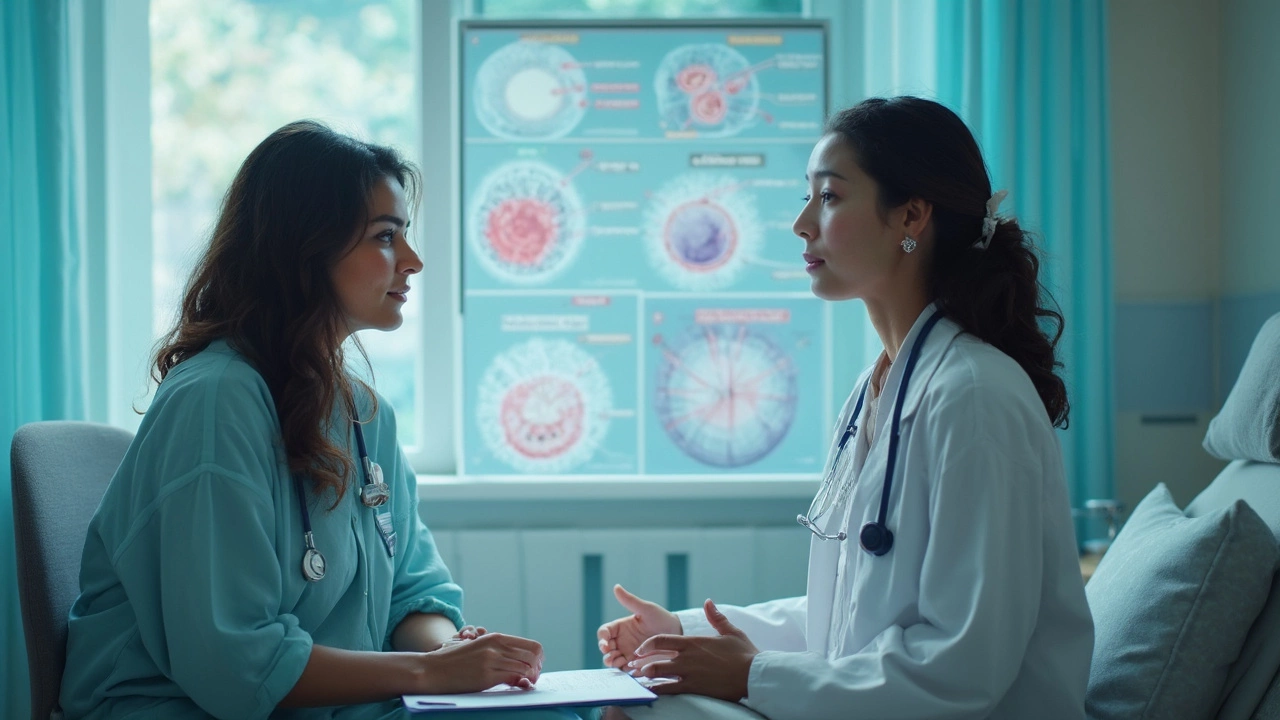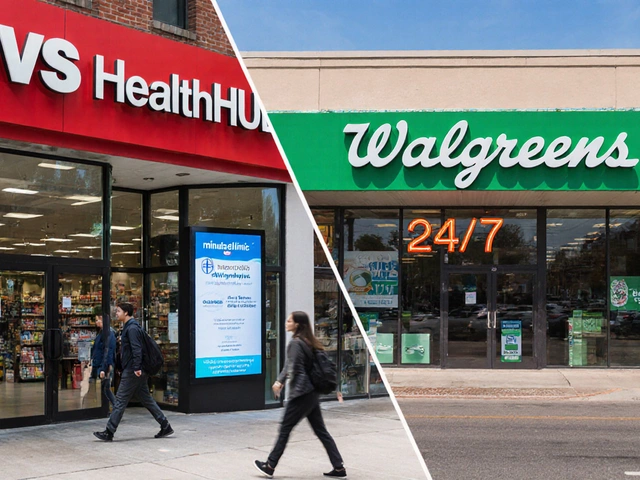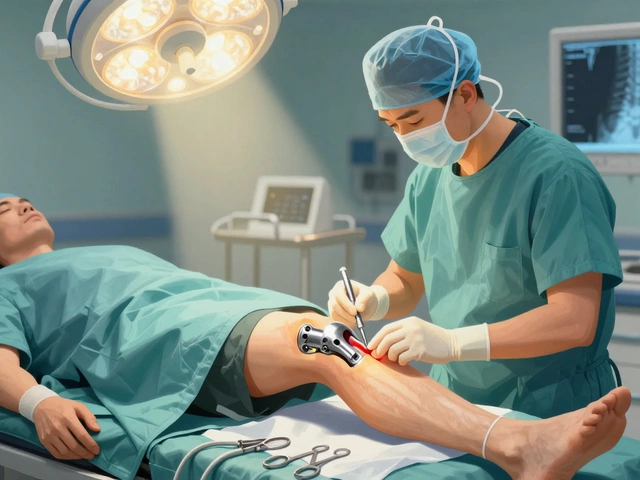We usually think of cancer as a monstrous disease that's unbeatable, don’t we? But here's something not many people know: some cancers have a very high chance of being cured, if caught early. Crazy, right? It’s not a magic trick but a mix of early detection and effective treatment.
Let's talk about reality for a minute. 'Curable' when it comes to cancer doesn’t mean it's easy, but rather that the chances of a complete recovery are extremely high with today's medical know-how. So, which cancers fall into this category?
Here’s the scoop: certain cancers like testicular cancer and specific types of skin cancer (like basal cell carcinoma) have a great chance of being stopped in their tracks. Many people are walking around today living proof of this, thanks to early intervention and targeted therapies.
- Reality of 100% Cure
- Spotlight on Curable Cancers
- Understanding Treatment Success
- Factors Affecting Prognosis
- Common Treatments for High Cure Rates
- Real-Life Stories of Survival
Reality of 100% Cure
Alright, let's break it down. The idea of a 100% cure for cancer can sound like a fairy tale, but it actually makes more sense when we look at it closely. What doctors and researchers mean by 'curable' is a high chance of survival and the disease not coming back within a certain number of years, usually five. So, it’s not like waving a magic wand, but it’s pretty close when everything goes right.
For certain cancer types, like some skin cancers and testicular cancer, the survival rate is incredibly high when caught early. Take basal cell carcinoma, for instance. This skin cancer is super common but also one of the most easily treatable. It's mainly because it grows slowly and rarely spreads, which makes surgical removal very effective.
Testicular cancer has even more impressive stats. According to the American Cancer Society, the 5-year survival rate for this type can be 95% or higher, thanks to advancements in treatment and the fact it often responds well to chemotherapy.
Why these cancers are more curable boils down to early detection and the nature of the tumors themselves. Tumors that don’t spread quickly or aggressively are more manageable. Plus, simple tests and regular check-ups play a big role. Doctors can catch them early when they’re still a tiny blip on the radar.
It’s also worth mentioning that a patient’s health, stage at diagnosis, and how well they respond to treatment are crucial. Modern medicine has made leaps in targeting these cancers effectively with specific treatments tailored for each case. It's like having a game plan already set and ready to go the moment a diagnosis happens.
Spotlight on Curable Cancers
When it comes to curable cancer, the first priority is recognizing which ones have high cure rates. Let's break it down: testicular cancer is a standout player. It might surprise you that this type of cancer, despite tending to affect young men, is highly treatable. In fact, over 95% of cases are cured when detected early. The secret? Regular self-exams and awareness. Catching it early makes all the difference.
Another big hitter is Hodgkin lymphoma. With advancements in treatment, especially chemotherapy and radiation, it boasts survival rates of around 86% after five years. It's amazing how far medical science has advanced to beat down this disease.
Then there's basal cell carcinoma, a sneaky but highly curable form of skin cancer. It usually pops up on sun-exposed skin. The good news is that when you catch it in time, a simple surgical removal can eliminate every bit of it.
| Cancer Type | 5-Year Survival Rate |
|---|---|
| Testicular Cancer | 95% |
| Hodgkin Lymphoma | 86% |
| Basal Cell Carcinoma | Varies, but nearly 100% |
What ties these cancer types together is the power of early detection. Accidental bruises, lumps, persistent coughs? Get them checked out. It's not paranoia—it's self-care. The trick with beating cancer is catching it before it spreads. Regular check-ups and acting quickly if you notice something off are keys to coming out on top.
Understanding Treatment Success
When it comes to beating cancer, treatment success often feels like a giant puzzle. Each piece, from early detection to specialized care, plays a vital role. So, what exactly makes one treatment a success while another might not hit the mark?
Let's break it down. First off, catching cancer early is like getting a head start. The earlier it’s spotted, the fewer places it can sneak off to. Doctors often stress the importance of screening, especially for those cancers that are known to be curable. Regular check-ups and paying attention to any unusual symptoms can make all the difference.
Another big piece in this puzzle is how targeted modern treatments are. We live in an amazing time where cancer drugs can be super specific, targeting only the cancer cells and sparing healthy ones. This precision means fewer side effects and often better outcomes.
As Dr. Michael Thompson from the National Cancer Institute puts it, "We are no longer treating all cancers as a single disease; personalization of therapy is the key success factor."
The success of cancer treatment also hinges on a patient's overall health and lifestyle. Things like diet, exercise, and mental health can influence recovery rates, showing that fighting cancer is truly a holistic process.
Consider this insight: a study on testicular cancer showed that survival rates jumped to over 95% when early-stage cancer was treated promptly. This goes to show how pivotal timing and tailored treatment can be.
| Cancer Type | 5-Year Survival Rate |
|---|---|
| Testicular Cancer | 95%+ |
| Basal Cell Carcinoma | 99%+ |

Factors Affecting Prognosis
When it comes to the chances of beating curable cancer, there are a bunch of things in the mix. Let's dive into a few of the most crucial ones.
First, there's the biggie: early detection. Catching cancer at the earliest stage gives you the best shot at a complete cure. Why? Because the cancer cells haven't gone on a wild tour around the body yet. Think of it like getting to a fire before it spreads—way easier to handle.
Then we've got the type of cancer. Some cancers, like certain skin cancers or testicular cancer, have particularly high cure rates if they're caught and treated promptly. These types can be more predictable in their behavior, which makes them easier to tackle.
Age and overall health are also on the list. Younger folks or those in good health might respond better to treatment because their bodies can handle and recover from the treatment stress more efficiently.
Let’s not forget the treatment plan. It’s like a tailored suit—one size does not fit all. The right plan can significantly boost the prognosis. This includes stuff like surgery, radiation, or specific drugs aimed precisely at the type of cancer you have.
And hey, having a solid support system matters more than you might think. Emotional and psychological support from family or friends can positively influence recovery and make a huge difference in enduring treatments.
Finally, ongoing research and clinical trials mean that today's treatment landscape is constantly evolving. New therapies are coming out that provide fresh hope, changing what the future looks like for many patients.
Common Treatments for High Cure Rates
So, what’s behind the curtain of successful cancer treatment? The treatments that give some cancers a high cure rate aren't as mysterious as you might think. Let’s look at a few crucial ones:
First up, we have surgery. It’s often the go-to option for early-stage cancers since it can completely remove the tumor. Think of it as physically getting rid of the problem, which works best when the cancer hasn’t spread.
Radiation therapy is another superhero in the cancer-fighting world. It blasts cancer cells with high-energy rays, making them unable to grow or divide. Pretty powerful stuff, right?
Then comes chemotherapy. Everyone’s heard about it, and while it sounds intense, it’s incredibly effective at targeting cancer cells throughout the body.
- Surgery: Best for localized, early-stage cancers.
- Radiation: Uses powerful wavelengths to zap cancerous cells.
- Chemotherapy: Attacks cells all over, reducing the risk of spread.
Let’s not forget newer treatments that are game-changers in many ways. Immunotherapy, for instance, helps the body’s immune system do a better job of fighting off cancer. It's like giving your immune system some superhero powers.
"Immunotherapy is changing the landscape of cancer treatment, providing hope for what once seemed insurmountable." - Dr. Jane Richards, Oncology Specialist
Take it from Dr. Richards, whose words echo the optimism and courage of thousands in the medical community.
Moreover, let's see how effective these treatments can be in numbers. Here's a table that gives you a snapshot:
| Treatment | Effectiveness (%) |
|---|---|
| Surgery | 85-90% |
| Radiation | 70-80% |
| Chemotherapy | 60-80% |
No single treatment is perfect on its own, but in the right combination, they significantly boost those cure rates. So, if we catch it early, engage with the right therapies, and have a bit of luck, often it’s a battle we can win.
Real-Life Stories of Survival
When it comes to cancer, positive stories can be the light at the end of the tunnel. Hearing about real people who've walked the path and come out stronger can be incredibly inspiring. Let's dive into some real-life stories where individuals beat curable cancer, thanks to early detection, medical advances, and a bit of sheer determination.
One of the most notable success stories involves testicular cancer. Remember Lance Armstrong? His journey is a rollercoaster of emotions. Diagnosed in 1996, Armstrong had advanced testicular cancer that had spread to his brain and lungs. With aggressive treatment and a never-give-up attitude, he not only survived but thrived, returning to professional cycling and winning multiple Tour de France titles. His story shines a light on the possibility of making a full recovery.
Then there's the famous actress and author Valerie Harper, known for her role as Rhoda in 'The Mary Tyler Moore Show'. In 2009, she was diagnosed with lung cancer. After undergoing treatment that involved a combination of surgery and targeted therapies, she declared victory over the disease. Her message of hope and persistence reached millions of fans around the world.
Another inspiring tale is that of a regular guy, Steve, a high school chemistry teacher from Chicago. He was diagnosed with an early stage of skin cancer, specifically basal cell carcinoma, a type of cancer that's known for its high curability. Spotting a suspicious mole with irregular borders on his hand, he acted fast, consulting a dermatologist who initiated treatment. Just a few outpatient sessions later, and he was cancer-free. Steve continues to teach and inspire his students, sharing his story to emphasize the importance of early detection.
These stories aren't just motivational; they're reminders of the power of awareness and timely action. Investing in regular check-ups and being aware of changes in one's body can give anyone a fighting chance against cancer with high cure rates. Remember, these aren't just numbers or statistics—these are real people with real lives turned around by early detection and effective treatment.










